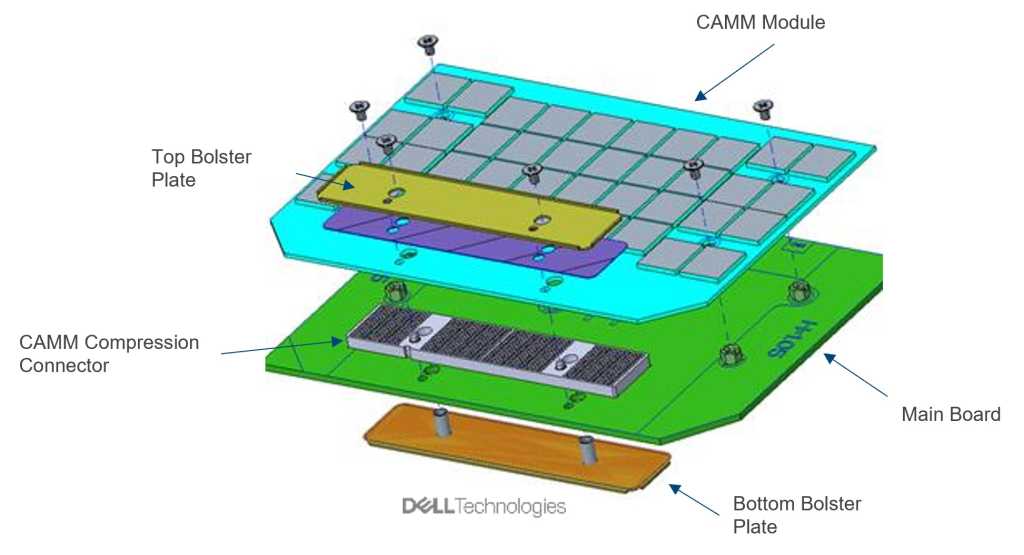If you were triggered over word that Dell is pushing a proprietary memory standard, take a chill pill. Dell’s new memory design isn’t really proprietary and may actually lead to benefits for performance laptops.
The controversy kicked up last week when images of Dell’s new CAMM, or Compression Attached Memory Module, leaked out. This immediately lead tech sites to declare that Dell was taking a path to “lock out user upgrades” and warning laptop users who like to upgrade their memory that they were “out of luck.”
In an interview with PCWorld, however, both the person who designed and patented the CAMM standard, as well as the product manager of the first Dell Precision laptop to feature it, assured us the intent of the new memory module standard is to head-off looming bandwidth ceilings in the current SO-DIMM designs. Dell’s CAMM, in fact, could increase performance, improve reliability, aid user upgrades, and eventually lower costs too, they said.
Not proprietary
Most of the internet hot takes last week, however, reacted to CAMM being proprietary, which is typically viewed as a method to lock people into buying upgrades only from one company. Dell officials, however, insist that’s not the case at all.
“One of the tenants of the PC industry is standards,” said Dell’s Tom Schnell, the Senior Distinguished Engineer who designed much of it. “We believe in that; we put standards into our products. We’re not keeping it to ourselves, we hope it becomes the next industry standard.”
Schnell said that Dell isn’t making the modules and has worked with memory companies as well as Intel on this. In the future, a person with a CAMM-equipped laptop will be able to buy RAM from any third party and install it in the laptop. Yes, initially, Dell will likely be the only place to get CAMM upgrades, but that should change as the standard scales up and is adopted by other PC makers. The new memory modules are also built using commodity DRAMs just like conventional SO-DIMMs.
In fact, Dell points out, it’s not even “proprietary” on its own laptops. The first Precision workstations that come with CAMM will also eventually be offered with conventional SO-DIMMs using an interposer. Mano Gialusis, product manager for Precision workstations, said the interposer option goes into the same CAMM mount, too.
This is Dell’s SO-DIMM interposer which will be used in Precision workstations for those who still want to buy laptops with SO-DIMM rather than the company’s new CAMM design.
Dell
With CAMM now a reality, Dell’s next step is to get it in front of JEDEC, the memory standards organization, to make it available to others, he said.
Why not create a standard from scratch? Schnell said its far easier to get a standard minted once it’s proven to work rather than trying to simply create something anew every time.
But what about Dell’s patents?
Dell does indeed hold patents on the CAMM design and there will be royalties, but the company says it’s too early to discuss royalties. It also points out that when building a typical laptop, so many different PC companies have patents that most of it is simply cross-licensed in the end. One final point Dell makes that should soothe any concerns: JEDEC itself requires any standards it blesses to follow Reasonable and Non-Discretionary, or RAND, terms. That basically means no standard can go forward through JEDEC unless the licensing is not anti-competitive, is reasonably priced, and cannot discriminate against a company.
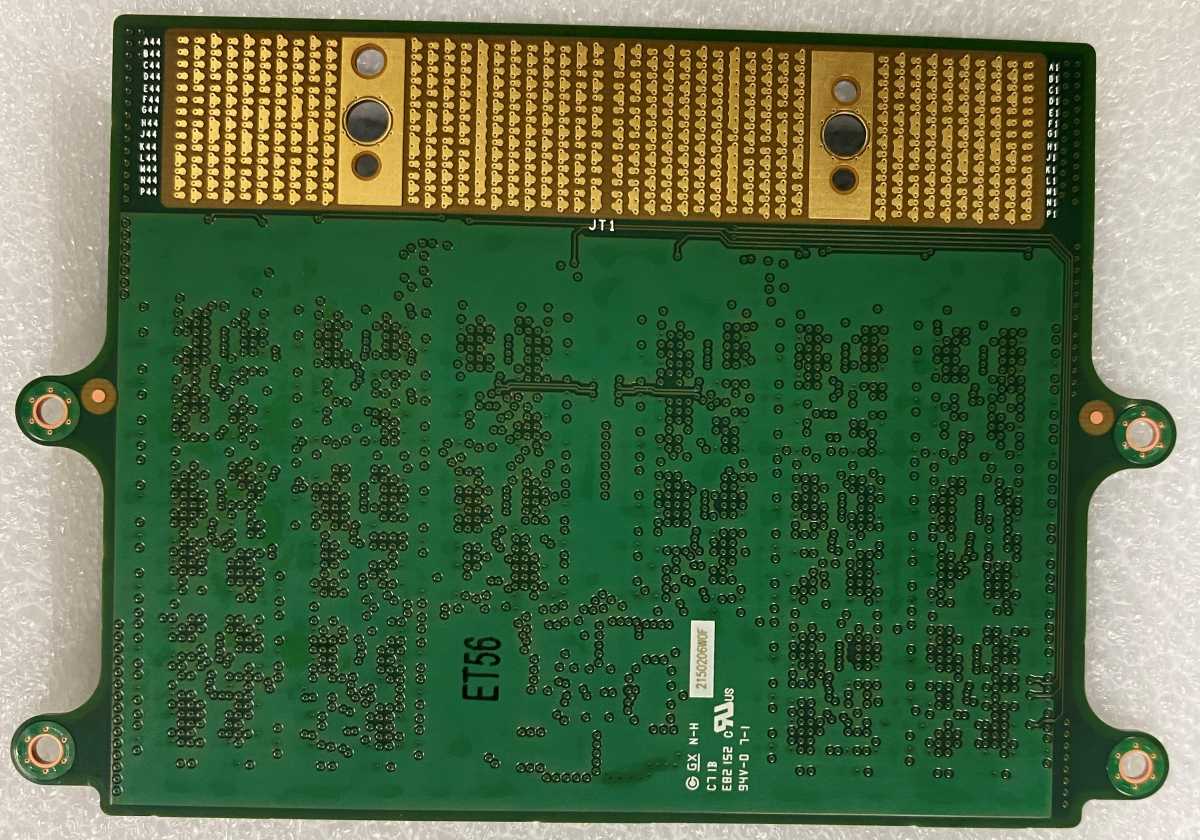
This is the backside of a 32GB CAMM module. The gold section is where the module is compressed onto a connector.
Dell
Here’s why CAMM is needed
So why do we need CAMM anyway? Dell’s Schnell said that SO-DIMM, or Small Outline Dual Inline Memory Module, is headed for a glass ceiling within a generation of design. SO-DIMMs, which were first introduced almost 25 years ago, haven’t changed much in all that time besides moving to newer and faster DRAM methods.
Much of SO-DIMM’s problems come from its relatively convoluted design, which elongates the wires or “traces” that have to connect the CPU with the RAM module. You can see that illustrated below in the route that wires take to get from the CPU to a four-SO-DIMM design, in the upper left. That distance is significantly shortened with Dell’s CAMM design, which you can see on the lower right. As we know, a shorter distance a wire has to run means less power needed as well as higher potential speeds. With CAMM, the distance to the CPU can be 1.5 inches, versus 3 inches on a SO-DIMM design.
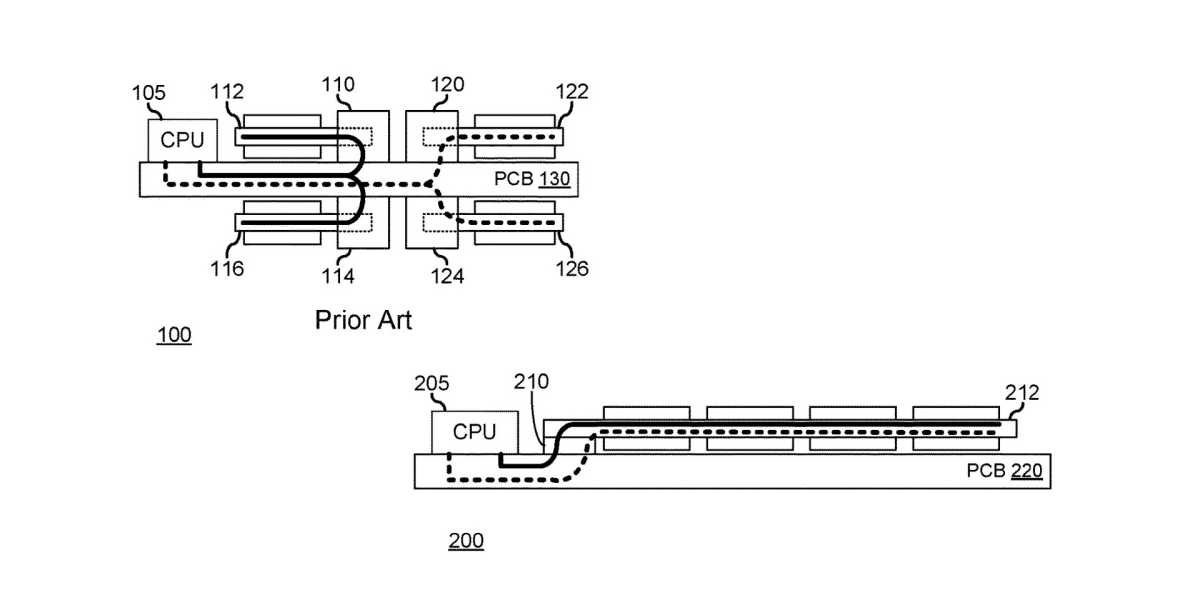
An illustration from a Patent Dell applied for in 2020 shows the convoluted path the memory traces takes to get from the CPU in a SO-DIMM (upper left) versus the company’s new CAMM (lower right.)
Dell
RAM is built using parallel interfaces, which means multiple wires leaving the CPU going to the memory. Because of the intense signal timing and integrity requirements, that also means every wire must be exactly the same length and also have enough spacing to reduce interference. Schnell said that for most applications, SO-DIMM hasn’t hit its limit yet, but by the time DDR6 arrives, the design of SO-DIMM will be well past its prime.
In fact, we’re already seeing a practical use for CAMM today. In a 12th-gen Intel laptop using two SO-DIMMs, for example, you can reach DDR5/4800 transfer speeds. But push it to a four-DIMM design, such as in a laptop with 128GB of RAM, and you have to ratchet it back to DDR5/4000 transfer speeds.
With CAMM, however, you can reach 128GB of density and reach DDR5/4800 transfers speeds. Schnell doesn’t get into the nitty-gritty performance details of how much better CAMM is over SO-DIMM but he did say that, in general, a compression connector such as the one Dell uses in its graphics card, called DGFF, can hit 20GHz, which is more than four times that of the rough clocks of a DDR5/4800 module’s megatransfer speeds.
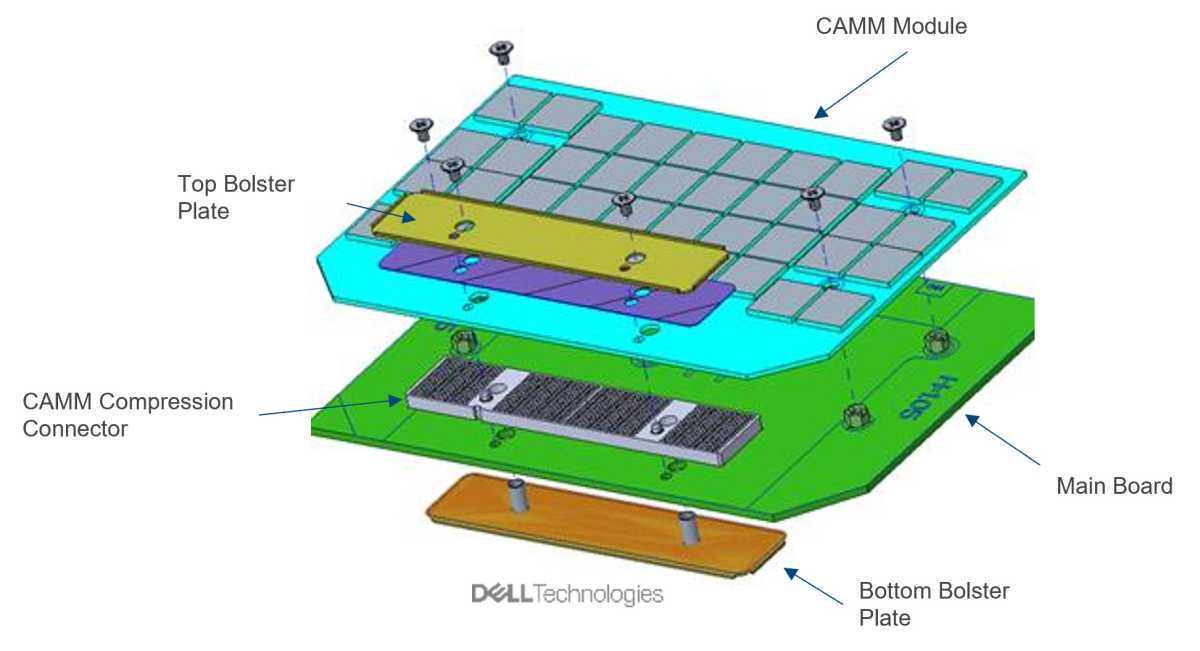
Dell’s new CAMM design can increase performance and reliability, and even aid upgrades.
Dell
CAMM will be more reliable, smaller, and even cooler
Beyond the performance advantage, Schnell said CAMM will improve reliability, improve thermals, and save space, which can make it possible to make a thinner laptop.
If you look back at the image above, it’s obvious how thick a SO-DIMM design can be, especially when four modules are used. Since four modules require four sets of traces that must all be the same length, many laptop makers mount them on both sides of a motherboard. That’s all good until you want to access the RAM on the other side of the motherboard. For the average person, that doesn’t mean just pulling off the bottom of the laptop, but also removing the motherboard from the laptop. That’s certainly not impossible, but removing the motherboard from a laptop means removing fiddly and delicate ribbon cables for the track pad, keyboard, display, and other components. And the more things you mess with, the greater the odds of breaking something.
When you have four physical DIMMs, you also exponentially increase the odds of a module being jostled loose. With CAMM, the compression design sandwiches in the connector, giving it more protection than a SO-DIMM’s contacts, which are more exposed to air. This improves reliability, said Schnell.
Finally, the CAMM design can actually help dissipate more heat since the connector can act as a heatsink. With a SO-DIMM, the heat can be trapped within the convoluted layers.
Dell said it simply believes it’s a better design and to prove that, it’s putting it into its new Precision 7770 mobile workstation. Dell’s Gialusis said industrial customers of the Precision 7770 demand performance and reliability, so putting CAMM into the lineup tells you the faith Dell has in the standard.
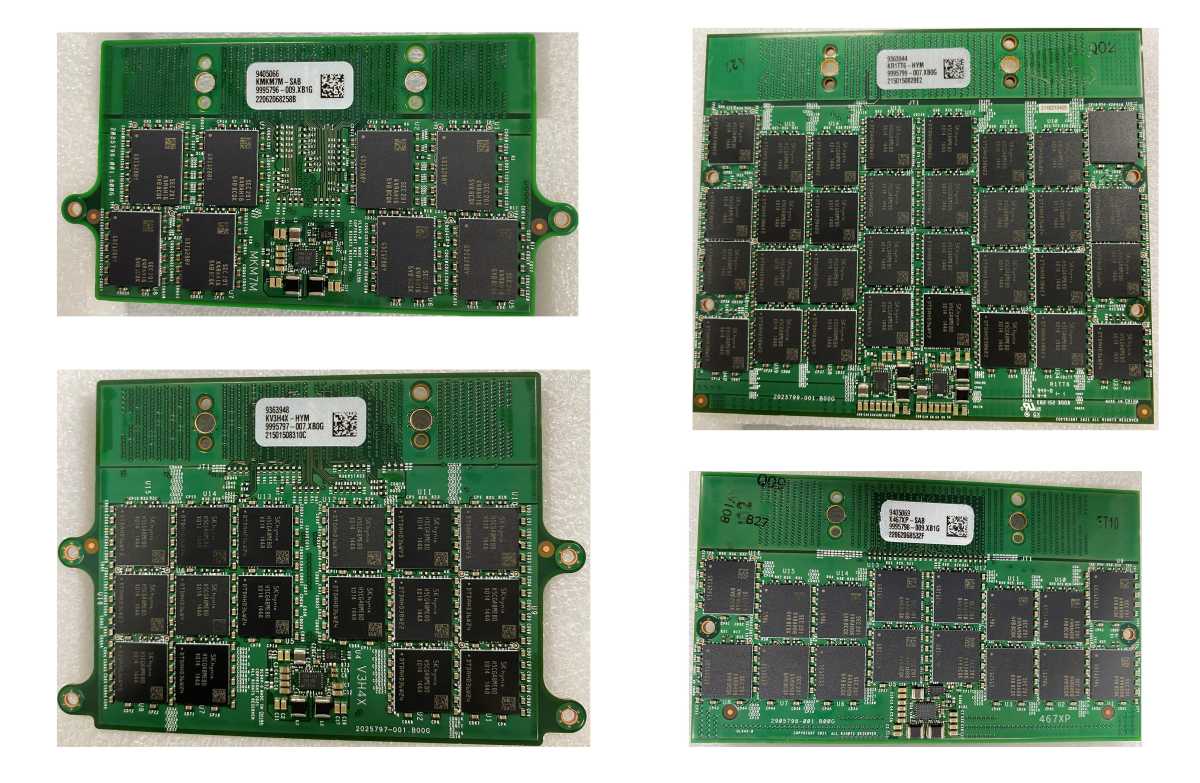
Dell’s new CAMM modules from 16GB (upper left) to 32GB (bottom left) and 128GB (upper right) and 32GB (lower right).
Dell

